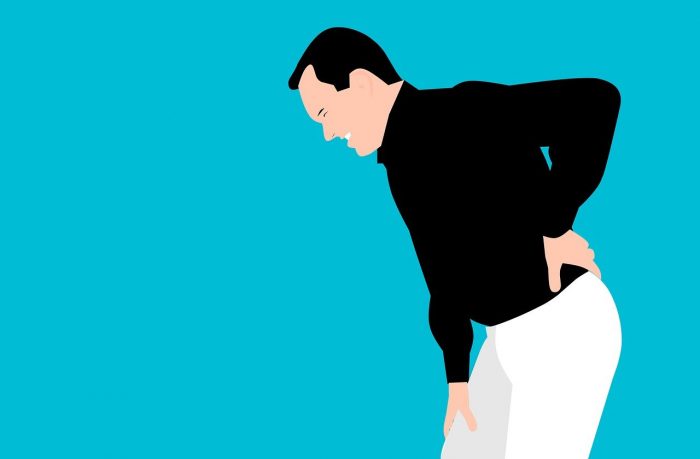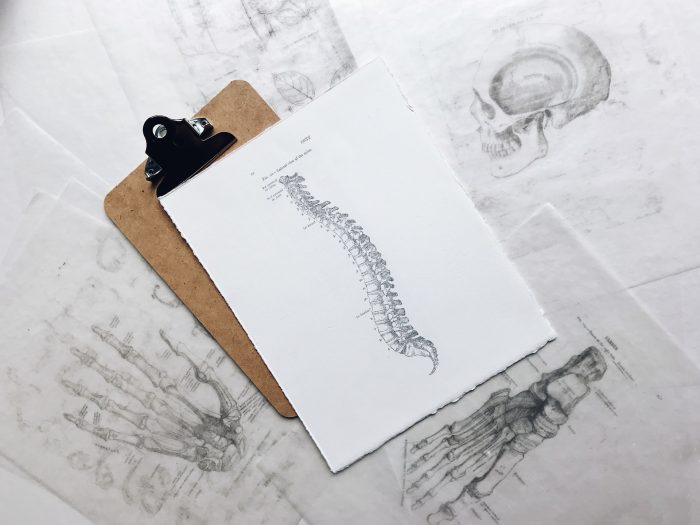Tens of millions of Americans suffer from back pain on an annual basis. If you’re one of them, you’re probably tired of searching for relief. Given so many sources of advice, how do you begin to know which will work best for you?

Common Causes of Chronic Back Pain
Chronic back problems can appear in any number of ways. From a constant, dull ache to sharp, stabbing pain, people experience a broad variety of discomforts. Regardless of the kind of pain you’re experiencing, it can nearly always be traced back to one or more of the following causes:
- Muscle atrophy. Also known as muscle deconditioning, muscle atrophy is one of the top causes of chronic back pain. This occurs when back muscles become too weak to support your upper body properly. This puts pressure on the spine and creates pain.
- Poor posture. Improper body mechanics can put stress on your spine and lead to soft tissue strains, which lead to pain and discomfort. This is a common cause of back pain for office workers.
- Genetics and aging. As you age, your body changes and aches and pains become more common. You lose strength in your muscles, and the discs in your spine become compacted.
- Overuse and repetition. In many cases, simple overuse and repetition of everyday activities lead to chronic back pain. Activities like sitting for long periods of time, lifting heavy objects, or sleeping on the wrong type of mattress are standard examples.
- Traumatic events. Sometimes, chronic back pain stems from a single event. It could be a vehicle collision, high-impact sports injury, or some sort of trip/slip-and-fall accident.
Five Tips for Reducing Chronic Back Pain

Understanding the root cause of your chronic back pain can help you address the issue with greater accuracy and better results. However, regardless of what may be causing it, you can take certain steps to reduce the pain and achieve greater comfort. Here are five ways to do that.
1. Maintain Correct Posture
The best thing you can do is practice maintaining the correct posture. Avoid slouching and regularly check your spinal alignment. Your neck should be in line with the rest of your spine, the chin should be up, and shoulders should be pinned back (not rounded over).
Be particularly mindful of your posture when sitting at a desk and/or working on a computer. It’s easy to hunch forward and lose proper alignment, which puts pressure on your lower back and increases the likelihood of pain.
2. Use Ice or Heat
Listen to your body. Apply ice or heat at the first sign of discomfort, pain, or tightness. Start with ice within the first 24 hours to reduce swelling and ease the pain. Then switch over to heat as a way to help relax the tightened muscles.

Heat can also be an effective remedy for back pain that is chronic (as distinguished from back pain that resulted from an acute injury). Be sure to use heat for no more than 20 minutes at a time, to avoid damage to your skin.
3. Try a Support System
Sometimes you just need a little more support for your back. This is where a support system from Spinal Armor may come into play.
The Spinal Armor support system is a comfortable back brace that provides proper support without restricting mobility. It allows you to bend and rotate while providing relief from pain and discomfort.
4. Stretch Your Muscles
Begin and end each day with a light stretching session. If you’re physically capable, yoga is a great way to ease muscle tension, increase flexibility, and send a flood of pain-killing endorphins to the site of discomfort. Over time, regular yoga/stretching can actually diminish your symptoms.

5. Improve Healthy Lifestyle Habits
Back pain is often exacerbated by poor lifestyle habits. By learning how to improve your daily routines, you can raise your body’s pain tolerance levels and prevent small issues from becoming chronic problems. Pay particularly close attention to sleep, diet, and hydration.
Stop Letting it Slide
Most people experience a sort of cycle with back pain in which they initially take it seriously but eventually learn to live with it. The longer you normalize back pain as just another part of your life, though, the worse things may get.
It’s time to be proactive – to go on the offensive – and address back pain at the source. The more conscientious you are about doing this, the better things will get.










